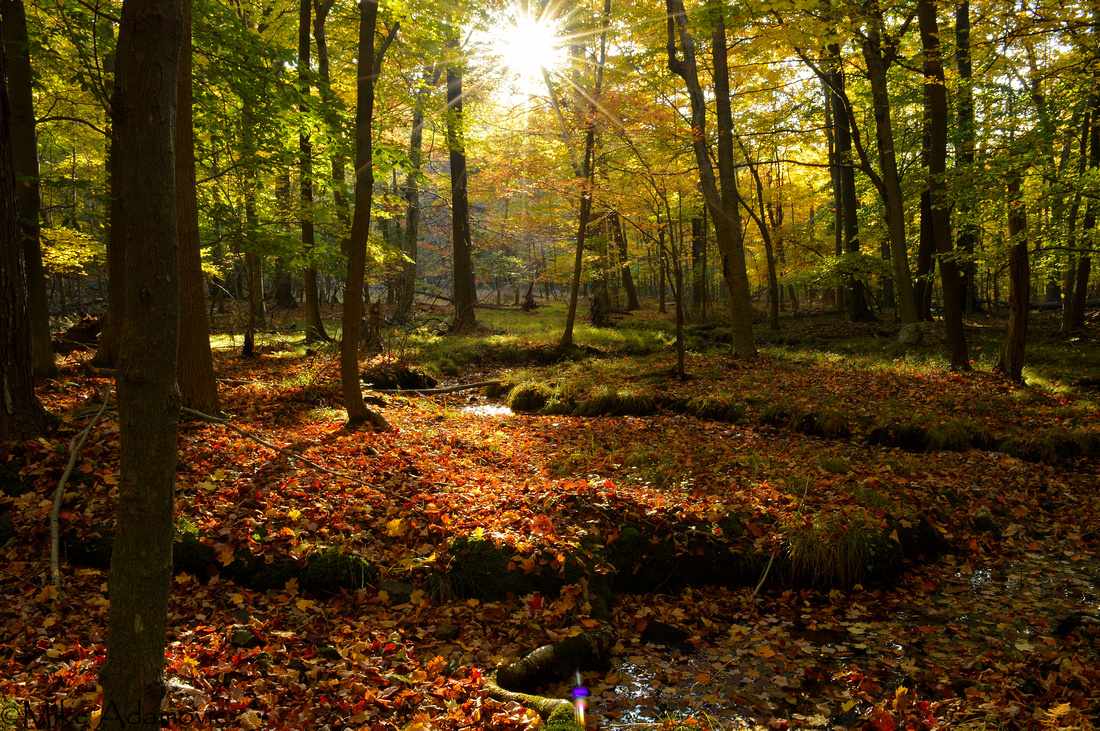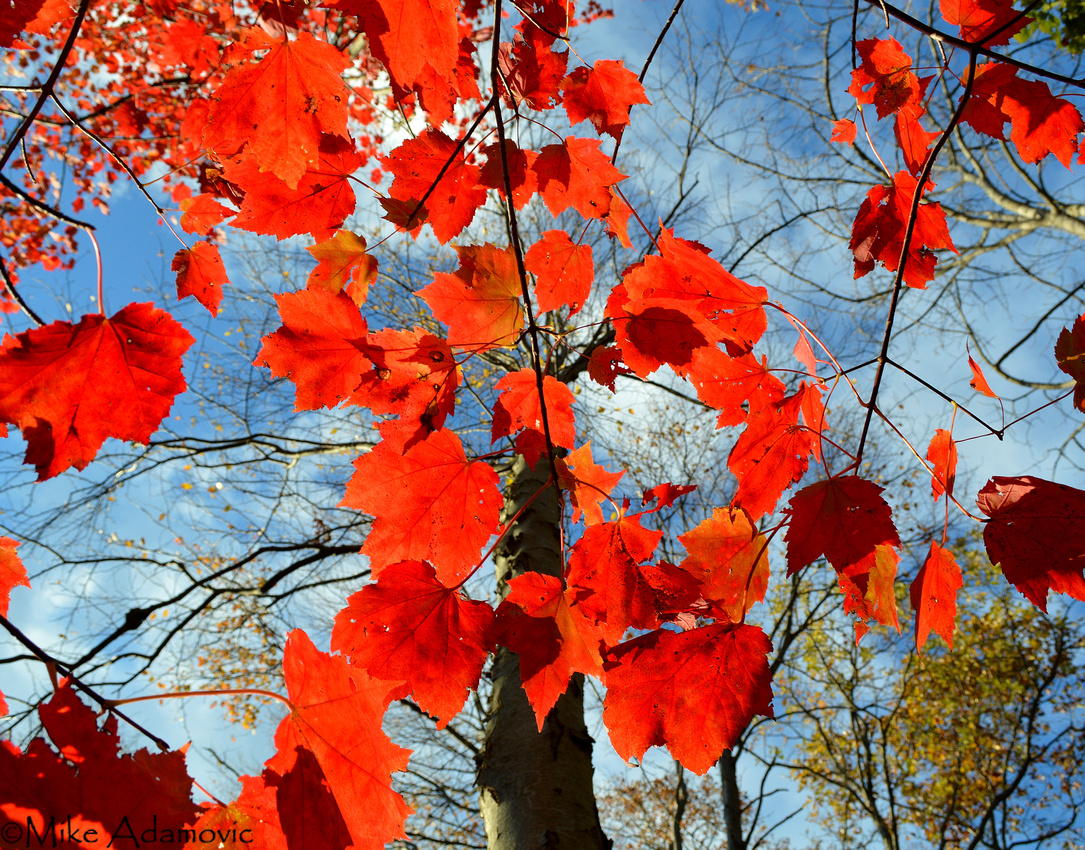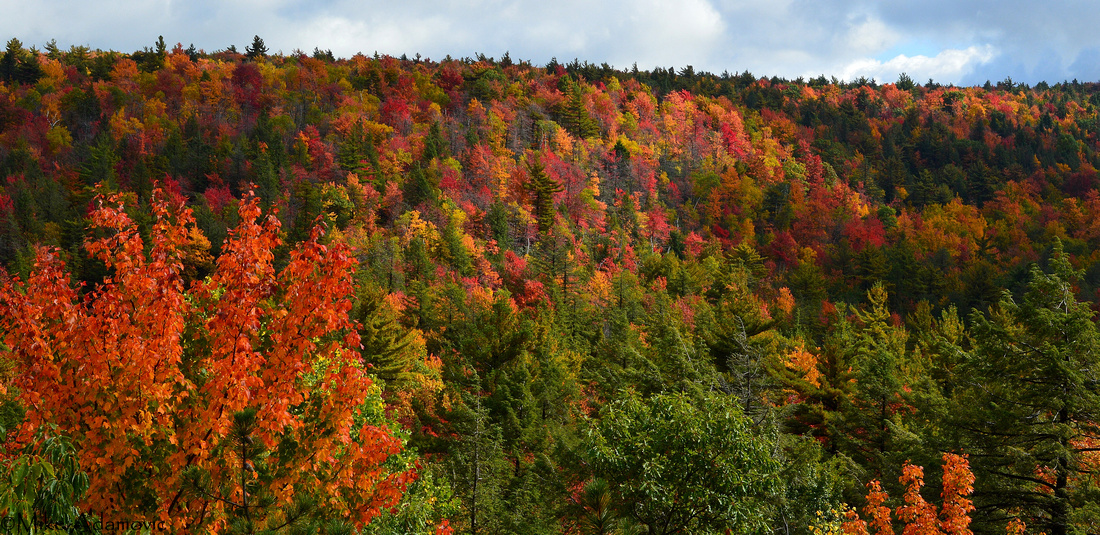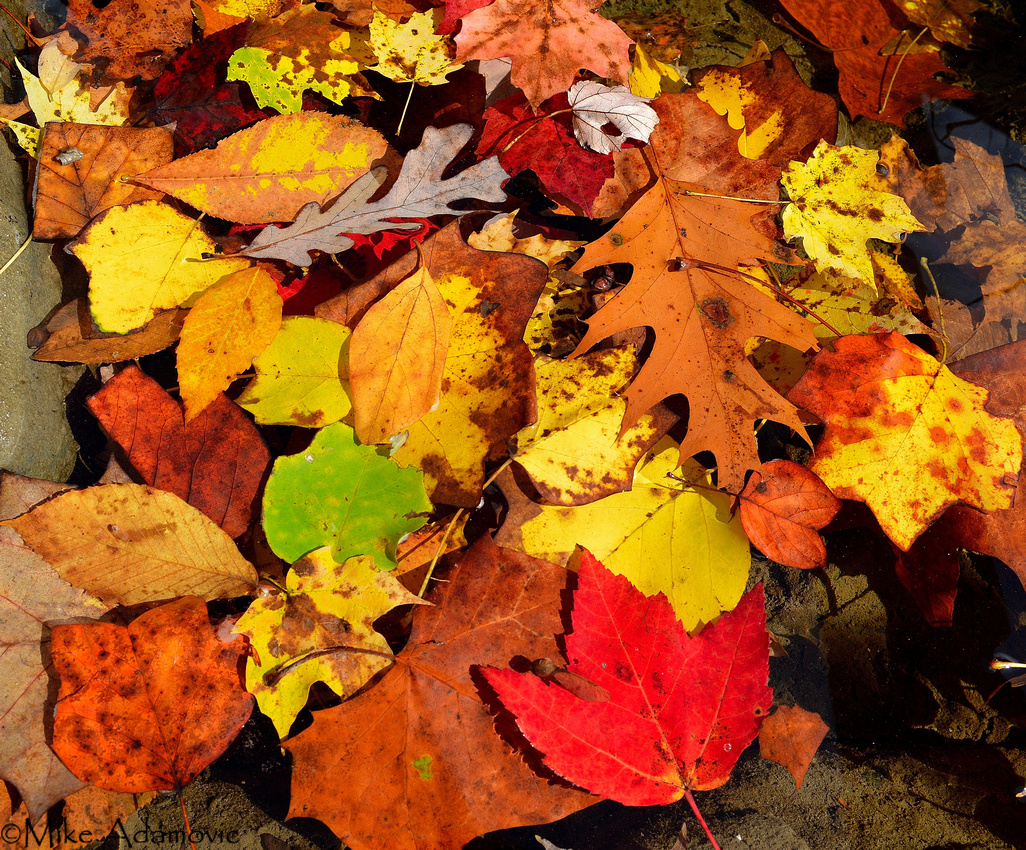Autumn
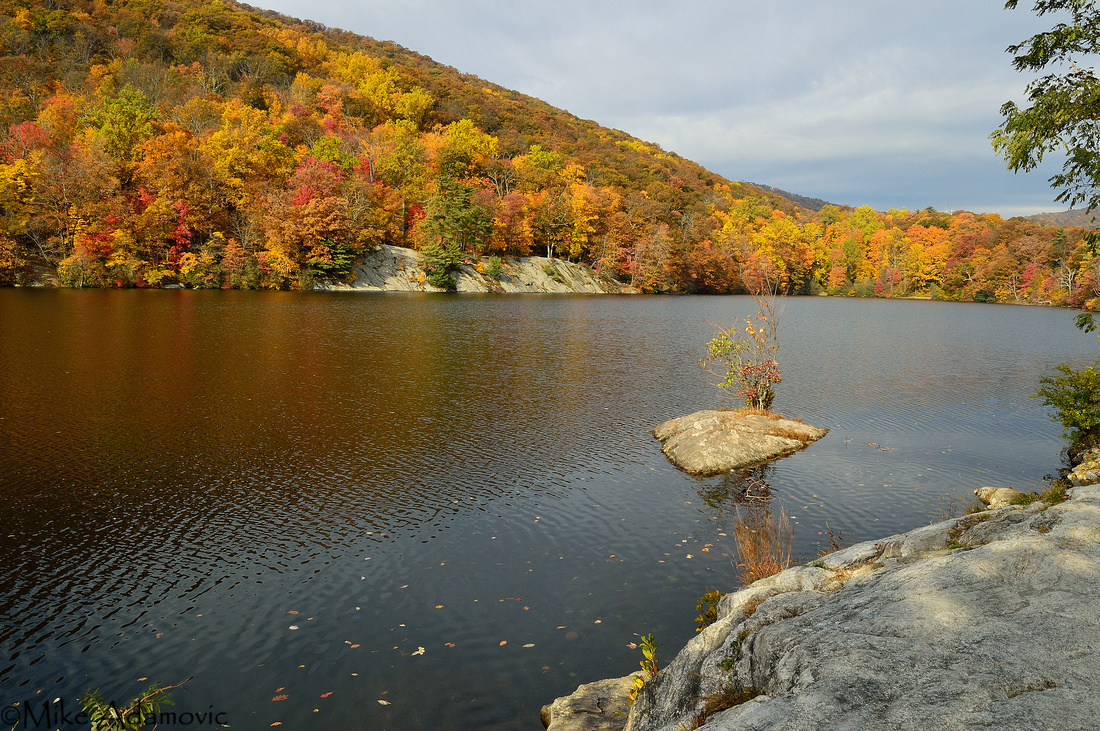

In the Northeastern U.S. leaf change begins during the early days of September in the high peaks and northernmost reaches of the region. It can come about quite suddenly from the often-unstable weather, while in the more temperate south the landscape is more languid in its acquisition of color. A frustratingly slow blush in this zone may not cause the forests to peak until late October or November.
Some years the forests are especially vibrant and explosive, others from some difference in the ever-changing climate, we find them to be relatively lackluster. The best displays result from a season with ample, but not excess, precipitation (lest the colors be muted). But this comes with a catch—it’s important that skies during the day be bright and clear, while nights cool and crisp. These conditions allow for the best degradation of chlorophyll, the pigment that masks the yellows and oranges already present in the leaves. While our accustomed reds and purples come about from the development of anthocyanin, a pigment formed from sugars in the leaf during sunny autumnal days. Fierce winds and drenching rains from a powerful storm can easily strip trees of the leaves and mar the autumnal show. In this respect, the leaves are somewhat like the showy spring ephemeral wildflowers. Blink and you may miss out. Despite the erratic nature of the environment, the Northeast easily boasts some of the most impressive foliage displays, not only in the U.S., but in the world. Only portions of Japan rival it.
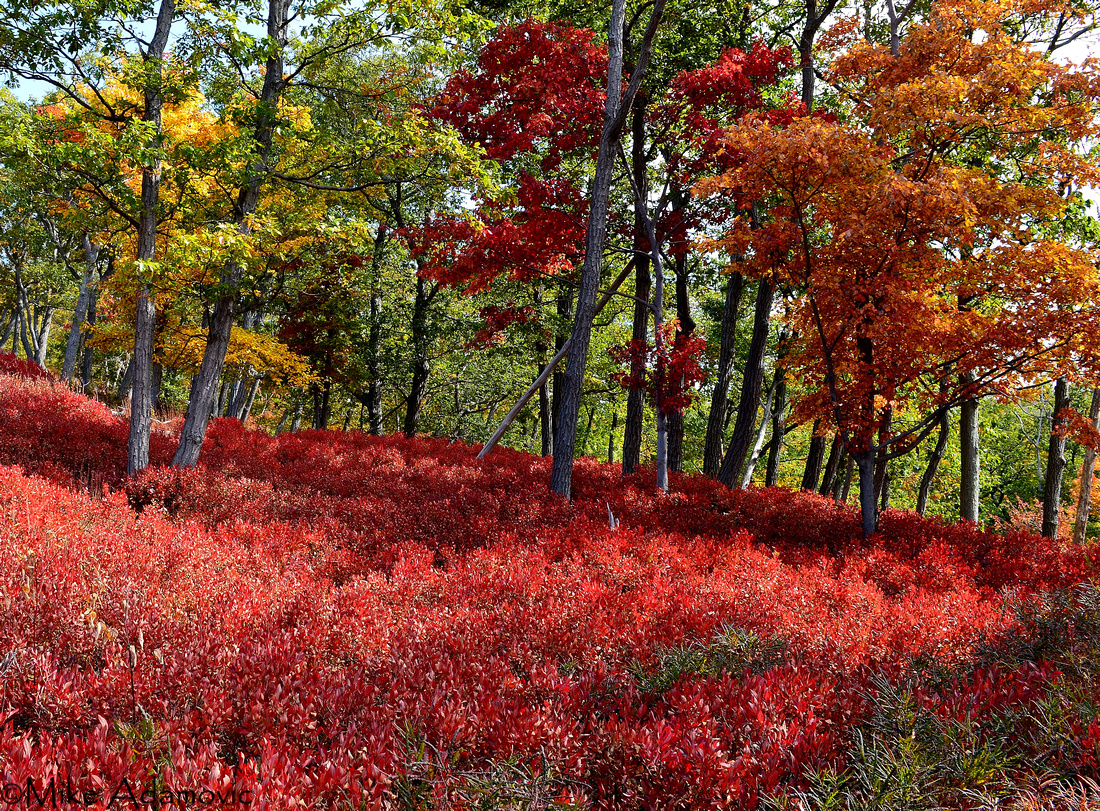
 Despite Europe having a relatively similar climate and also possessing temperate deciduous forests, fall spectacles tend to remain relatively sober, forests mostly tinged a yellow-brown. The Western U.S. has somewhat similar attributes, though things do tend to run slightly more pronounced. In the high altitudes of saw-toothed mountain ranges in Colorado and surrounding states, the land is beset with seemingly endless undulating waves of yellow aspens, whose quaking leaves make the infinite landscape appear as a fluid sea of gold. Yet, even these charms pale in comparison to the potent explosion of color that takes hold of the Northeast each autumn. We have not only the common yellows and golds, but bold purples, mauves, and maroons, unchanging evergreens, and perhaps most exquisite of all, flaming reds and oranges that blaze out even more intensely than the sweetest sunset imaginable.
Despite Europe having a relatively similar climate and also possessing temperate deciduous forests, fall spectacles tend to remain relatively sober, forests mostly tinged a yellow-brown. The Western U.S. has somewhat similar attributes, though things do tend to run slightly more pronounced. In the high altitudes of saw-toothed mountain ranges in Colorado and surrounding states, the land is beset with seemingly endless undulating waves of yellow aspens, whose quaking leaves make the infinite landscape appear as a fluid sea of gold. Yet, even these charms pale in comparison to the potent explosion of color that takes hold of the Northeast each autumn. We have not only the common yellows and golds, but bold purples, mauves, and maroons, unchanging evergreens, and perhaps most exquisite of all, flaming reds and oranges that blaze out even more intensely than the sweetest sunset imaginable.
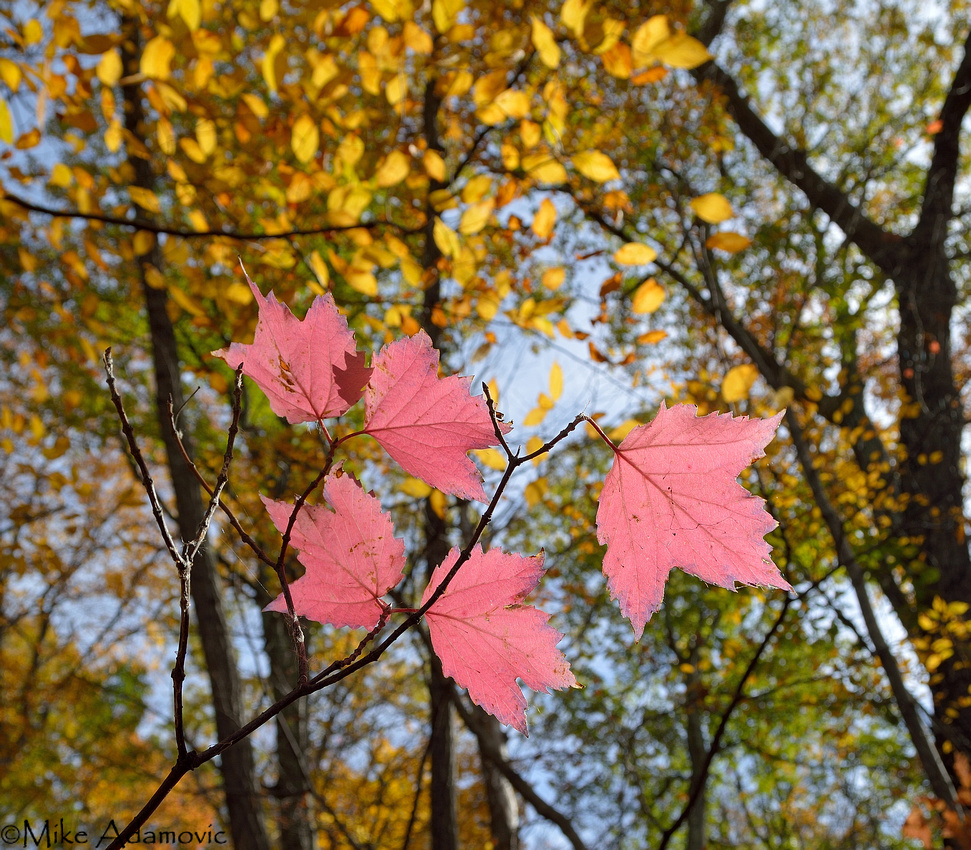
 To those not accustomed to the fall scenery of the Northeast, an immersion for the first time can be a rapturous, otherworldly experience. Henry David Thoreau, the poet-naturalist, and life-long resident of Concord, Massachusetts, penned a stirring essay on the changes that take place during this magical season. In “Autumnal Tints” he recounts how he encountered a man, who, upon leaving a New England city for the first time in his life during the late fall season, was mesmerized even by the lingering remnants of the foliage he encountered. While this person was “a fortnight too late for the most brilliant tints,” he “would not believe that there had been any brighter,” Thoreau recalls. Such incredulity continues to be commonplace to those isolated in cities or sections of the world not graced with such breathtaking displays. They need to be seen firsthand to be believed, hence the “leaf peepers” that migrate to the Northeast every year from all across the globe.
To those not accustomed to the fall scenery of the Northeast, an immersion for the first time can be a rapturous, otherworldly experience. Henry David Thoreau, the poet-naturalist, and life-long resident of Concord, Massachusetts, penned a stirring essay on the changes that take place during this magical season. In “Autumnal Tints” he recounts how he encountered a man, who, upon leaving a New England city for the first time in his life during the late fall season, was mesmerized even by the lingering remnants of the foliage he encountered. While this person was “a fortnight too late for the most brilliant tints,” he “would not believe that there had been any brighter,” Thoreau recalls. Such incredulity continues to be commonplace to those isolated in cities or sections of the world not graced with such breathtaking displays. They need to be seen firsthand to be believed, hence the “leaf peepers” that migrate to the Northeast every year from all across the globe.
